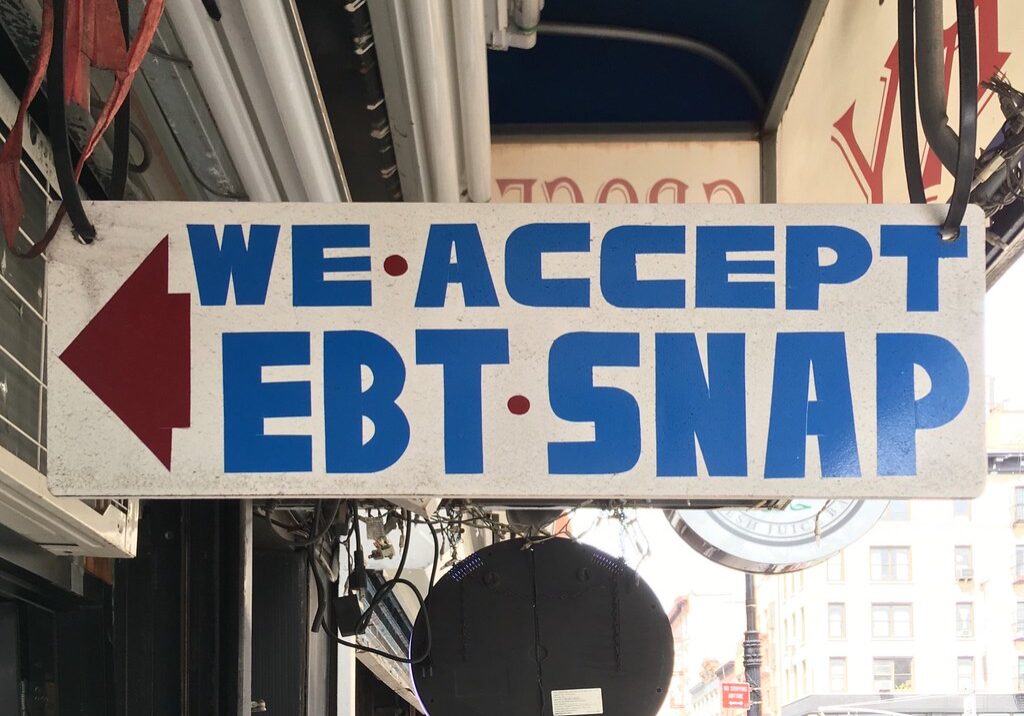Montana Issues Partial SNAP Benefits as Federal Shutdown Nears End
State issues 65% of maximum allotments as Senate passes bill to fully fund program through September 2026

By Staff Writer
Nov 10, 2025
HELENA — Montana food assistance recipients received reduced SNAP benefits over the weekend as the Senate moved to end what has become the longest government shutdown in U.S. history, state officials announced Monday.
The Montana Department of Public Health and Human Services issued partial November benefits — providing 65% of maximum allotments — to recipients’ Electronic Benefit Transfer (EBT) cards on Sunday, Nov. 9, following updated federal guidance.
The state had been waiting for direction from the U.S. Department of Agriculture amid a chaotic week of conflicting federal orders about how much food assistance states could provide during the ongoing shutdown.
“DPHHS issued partial SNAP benefits to clients’ Electronic Benefit Transfer (EBT) cards on Sunday, Nov. 9, following receipt of the updated federal guidance,” the department said in a press release Monday.
Shutdown triggered benefit uncertainty
The federal government entered a shutdown at midnight on Oct. 1 after Congress failed to pass appropriations legislation for the 2026 fiscal year, and the shutdown has continued for 41 days as Congress has been unable to pass a continuing resolution.
Citing the government shutdown, USDA froze funding for SNAP beginning Nov. 1 — the first time that’s happened since the country’s largest anti-hunger program began six decades ago.
Over the past week, the USDA has issued guidance multiple times as lawsuits over the agency’s decision not to tap into a contingency fund to pay November benefits have worked their way through federal courts.
The USDA ordered states to stop issuing full food stamp benefits for November and to “immediately undo” any issuance of the full allotments after a Supreme Court justice on Friday paused a lower court order requiring the agency to pay Americans their full assistance. In the Saturday directive, the USDA told states to instead proceed with issuing partial benefits.
The November 8 USDA memorandum obtained by DPHHS came after Justice Ketanji Brown Jackson on Friday evening temporarily paused a lower court order that required the Trump administration to cover full food stamp benefits^1.
Congress reaches deal to reopen government
A critical bloc of eight Senate Democratic centrists on Sunday helped advance a funding deal to reopen the government in exchange for a future vote on extending enhanced Affordable Care Act subsidies^2, putting Congress on a path to end the longest shutdown in U.S. history within days.
The Senate on Monday night passed a bill to fund the government and end the longest shutdown in U.S. history. The bill, which passed 60-40 with the support of a handful of Democratic senators and nearly all Republicans, will be sent to the House of Representatives.
The shutdown deal includes full-year funding for SNAP through Sept. 30, 2026.
To end the shutdown, the House needs to pass the Senate bill, and then President Donald Trump must sign it into law.
U.S. Senator Tim Sheehy voted in favor of the legislation and released a statement Monday night calling the impasse the “Schumer Shutdown.”
“The past 40 days of the Schumer Shutdown have been an embarrassment to our country,” Sheehy said. “I’m glad to see the Senate reach an agreement tonight and look forward to reopening the government, restoring badly needed common sense in D.C., and getting back to work for the American people.”
What SNAP recipients should know
DPHHS is encouraging clients to check their EBT card balances by calling the dedicated EBT Cardholder Help Desk at 1-866-850-1556 or by visiting mybnft.com.
The department noted that the EBT Cardholder Help Desk or the Bnft website, rather than the Public Assistance Helpline, are the fastest and easiest methods to check card balance.
(Many recipients will receive less than 65% of their usual assistance because of the way food stamp benefits are calculated.)
For the most up-to-date information about SNAP benefits, recipients can visit the DPHHS SNAP webpage.
The shutdown has affected Montana communities across the state. Butte-Silver Bow levied a property tax to cover SNAP costs, while Governor Gianforte donated a quarter of his salary to hunger relief efforts. Missoula’s Food for Fines program also returned to help address food insecurity during the federal impasse.
Categories: Government, Health, Politics
Don’t miss the week’s top Montana stories
Join readers across Montana who rely on WMN for independent reporting.
Unsubscribe anytime. Want to support WMN? Upgrade for $4/month →




